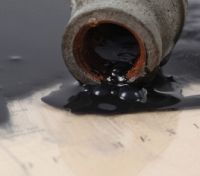

The “static kill” of BP’s ruptured oil well in the Gulf of Mexico has plugged the leak, the company has revealed.
The procedure to permanently plug the ruptured well involves pumping mud a mile into the well, forcing the crude oil back down. BP spokeswoman, Sheila Williams said the drilling mud is currently holding the oil down and that further pumping may or may not be required depending on the results observed during monitoring.
It comes after Government scientists produced new estimates that the well gushed 4.9m barrels of oil into the gulf between the explosion of the Deepwater Horizon rig on April 20, and the placement of a temporary capping stack stopping the flow on July 15.
About three-quarters of the escaped oil has already evaporated, dispersed, been captured or otherwise eliminated, according to a new analysis by the National Oceanic and Atmospheric Administration.
BP said it would continue to work with Thad Allen, appointed by Barak Obama’s administration to oversee the clean-up operation, to determine the next course of action, which includes assessing whether to inject cement into the well via the same route.
Mr Allen made it clear that to be safe, the gusher will have to be plugged up from two directions. He said the 18,000ft relief well that BP has been drilling over the past three months will be used later this month to execute a “bottom kill”, in which mud and cement will be injected into the bedrock.
Despite the breakthrough on the static kill operation, the new leak estimates could spell bad news for BP, which also faces an investigation by US securities regulators into whether its employees profited illegally from the spill. The revised flow numbers suggest the company had underestimated costs by at least $1 billion.